What changed on the Nike Alphafly NEXT% vs Vaporfly NEXT%? Running shoe fans have asked that question a lot since the world’s best marathoner, Eliud Kipchoge, broke the two-hour marathon barrier in the Nike Air Zoom Alphafly NEXT%. Since that day in October 2019, Brigid Kosgei set the Women’s Marathon world record in the Nike ZoomX Vaporfly NEXT%, Galen Rupp won the 2020 US Olympic Trials in the Alphafly NEXT%, and we reviewed the Vaporfly NEXT%. The two models are Nike’s top of line road racers and were on top athlete’s feet for a ton of road running records and PRs.
We’ve been waiting patiently for our chance to get the Alphafly NEXT% in hand and write about what they offer. And thanks to the team at Nike Running, we have our chance to give you our first impression and compare the Alphafly NEXT% vs the Vaporfly NEXT%.
Update: Click here for the full Nike Alphafly NEXT% performance review.
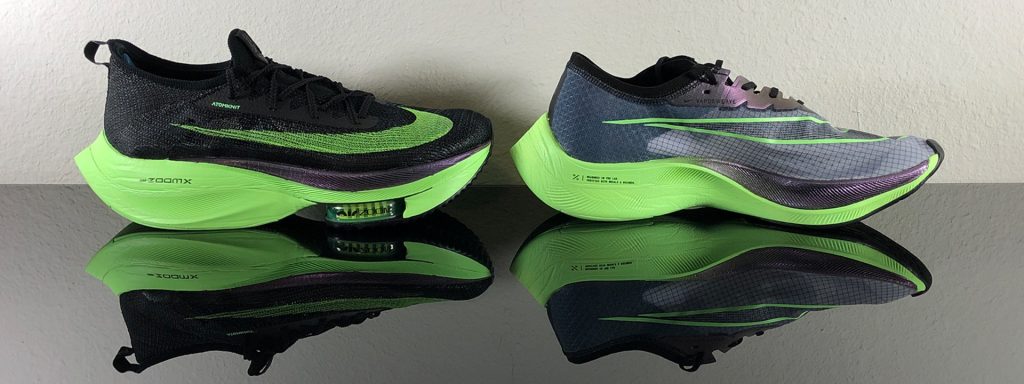
Alphafly NEXT% vs Vaporfly NEXT%: What’s the same?
- ZoomX midsole. Nike’s beloved Pebax cushion is back. Pebax is super light and rebounds better than any other foam on the market (though its a little tippy). It’s perfect for running long distances. Nike didn’t need to change the foam because it works so well. Nike even doubled down by adding more of it. Where’s the “same but more” category when you need it?
- Carbon Fiber Plate. Just like in the Vaporfly NEXT%, there’s a full-length carbon fiber plate sandwiched by layers of foam. The plate stabilizes the ZoomX foam and works with it to provide a bouncy feeling. Carbon Fiber plates are HUGE in running right now. It’s basically become a requirement that all top of the line racing shoes have one.
- Rocker geometry. The midsole still features the exaggerated heel and toe curvature that “guides” the foot through a quick heel to toe transition and lift off. This is becoming standard on any shoe meant for racing or speed training. It has also been trickling down to other Nike products like the wide-footer friendly Nike React Infinity Run.
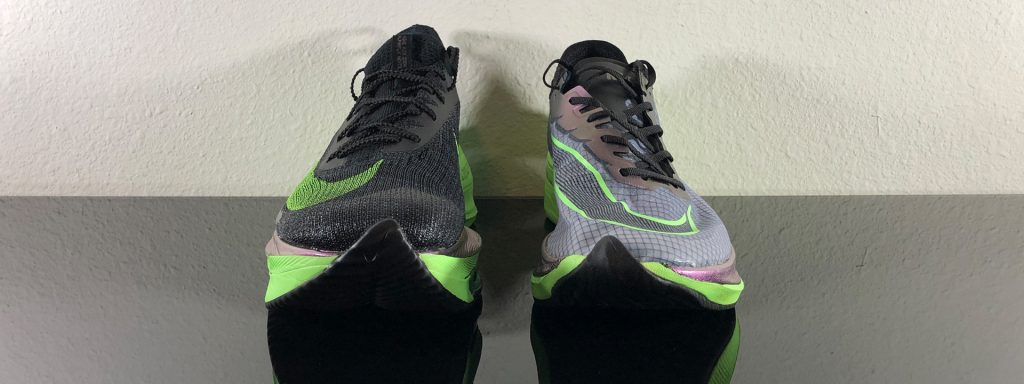
- Asymmetrical lacing. Though not as pronounced as the Vaporfly, the Alphafly features asymmetrical lacing. The lacing structure curves slightly towards the lateral side of the foot. By arranging the lacing this way, the top of the foot gets less pressure. It’s helpful for the type of long distance running that made the Vaporfly and Alphafly famous.
- Achilles pillow. It returns. The Alphafly pillow is more sculpted than the Vaporfly version. The result is the same, extra heel comfort.
- Insole. Both insoles look and feel the same. Also, the insole is still so fiercely glued down that removing it is basically impossible.
- Length. The Alphafly fits true to size. Feel free to grab your normal Nike shoe size or the size you purchased in the Vaporfly (assuming you didn’t go up half a size to get extra width).
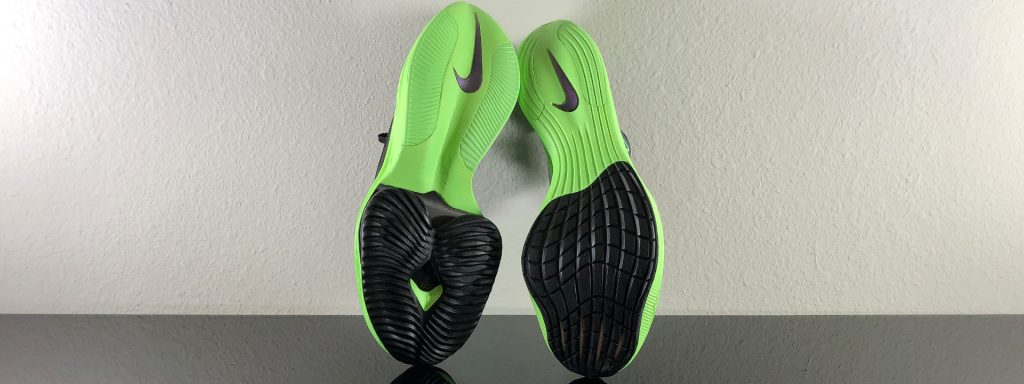
Alphafly NEXT% vs Vaporfly NEXT%: What’s the difference?
- Forefoot Zoom Air. The Alphafly NEXT% features two huge forefoot Zoom Air bags that sit beneath the carbon fiber plate and a layer of ZoomX. Basketball fans will recognize this forefoot setup from the Nike LeBron 17 (minus the ZoomX). I’m pretty sure these are the tallest Zoom Air bags to ever appear on a running shoe. And they do the job. The forefoot impact protection is impressive.
- Stack height. The two shoe’s midsole heights are different. The difference in millimeters is small. The Alphafly’s height is 35mm in the forefoot and 39mm in the heel whereas the Vaporfly’s height is 32mm and 40mm respectively. Even though it’s not a big variance, I feel higher off the ground in the Alphafly.
- Offset. Nike lessened the heel to toe offset from 8mm to 4mm. Personally, I love this change as 4mm-6mm is my offset sweet spot. You may feel differently. Many runners prefer 8-10mm offset so this might be the biggest and most polarizing change.
- Upper material. The Vaporweave on the Vaporfly’s upper is replaced with Atomknit. Atomknit is Flyknit that is steamed and stretched. The Vaporweave upper is best described as a ripstop/plastic hybrid. It felt strange at first but won a bunch of fans and proved efficient at avoiding water absorption. Atomknit feels better from a comfort perspective. It didn’t absorb much, if any, water on my first run. I’ll have to see how it does during long runs on hot days.
- Laces. The laces on the Vaporfly were small, thin and not that great. The Alphafly’s got slightly thicker laces with serrated edges. The idea behind the serrated edges is that they won’t pull free while wet during runs. I like them so far because they’re easier to handle.
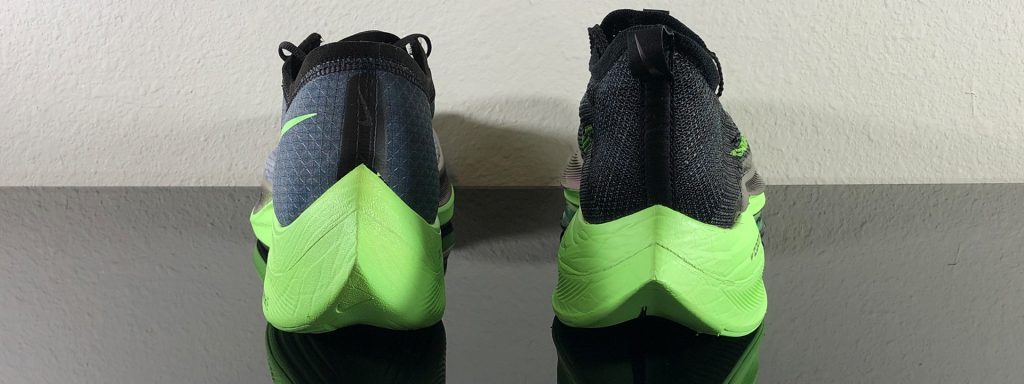
- Fit. The heel and forefoot on the Alphafly are wider than the same areas on the Vaporfly. The midfoot/arch still feels very snug. As soon as I put on the Alphafly, I knew it would accommodate a wider range of foot types.
- Support. A regular complaint about the Vaporfly was its tippiness, especially while cornering. The Alphafly is still a bit tippy around corners but Nike has improved the stability. They did it by flaring the forefoot midsole out wider and using the two Zoom Air bags as outriggers. Nike also put a strip of fuse around the bottom of the upper where it connects to the midsole. Fuse is Flyknit and glue melted together. It’s stronger than normal knit and should add much needed support to help prevent rollovers.
- Weight. Those Zoom Air bags come with a price. The Alphafly (7.4 oz) is slightly heavier than the Vaporfly (6.6. oz). Based on my initial run in them, I think it’s an acceptable trade off. Of course, I’m 6’6″ and 200 pounds so beefier shoes often work great for me. Smaller runners may end up preferring the Vaporfly. I think many runners will continue to choose the Vaporfly NEXT% for race distances of 10k and under.
- Outsole. The Alphafly’s outsole is redesigned and features more rubber in the both the forefoot and the heel. My rainy first run indicates the traction is slightly better than the Vaporfly. I didn’t notice any slippage, even on some mildewy sidewalks. I’ll need to run in them more before giving a more concrete judgement.
- Price. At $275, the Alphafly costs $25 more than the already expensive $250 Vaporfly.
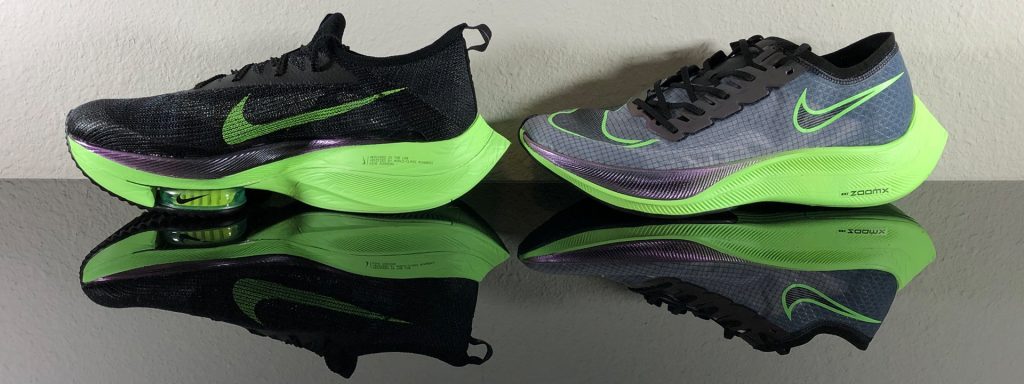
Overall First Impression
The Nike Alphafly NEXT% vs Vaporfly NEXT% battle is an interesting one. On one hand, the Alphafly seems like a big improvement in a bunch of ways I listed above like fit, outsole, and forefoot cushion. On the other hand, it’s $25 more expensive, heavier, and has a flatter offset some runners won’t love.
My initial impression is that the majority of people will upgrade to the Nike Air Zoom Alphafly NEXT% and be extremely happy with their decision. However, there’s going to be plenty of runners who will stick with the tried and true Nike ZoomX Vaporfly NEXT%. And I can’t blame them. Both shoes are incredibly bouncy racing shoes that prevent your legs from taking a beating over long distances. It’s rare you face a choice where you can’t go wrong. Pending my performance review, I’m thinking we’ve got a rare win/win choice between these two shoes.
Click to read more WearTesters Running Shoes reviews.

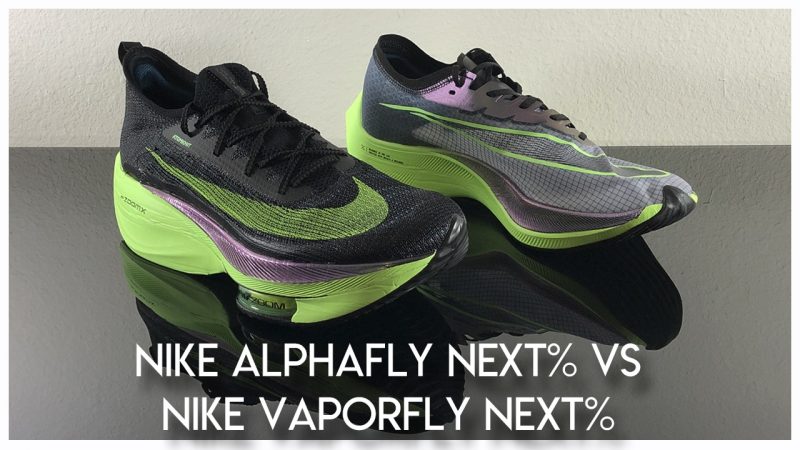

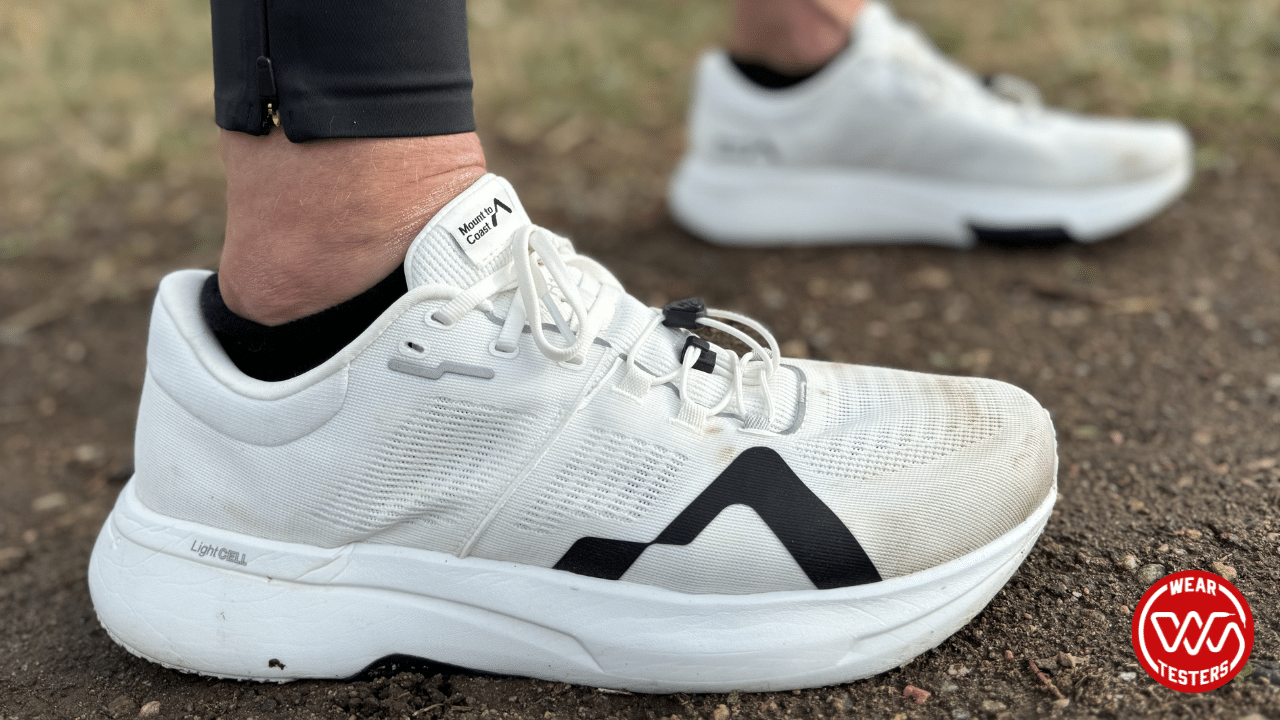
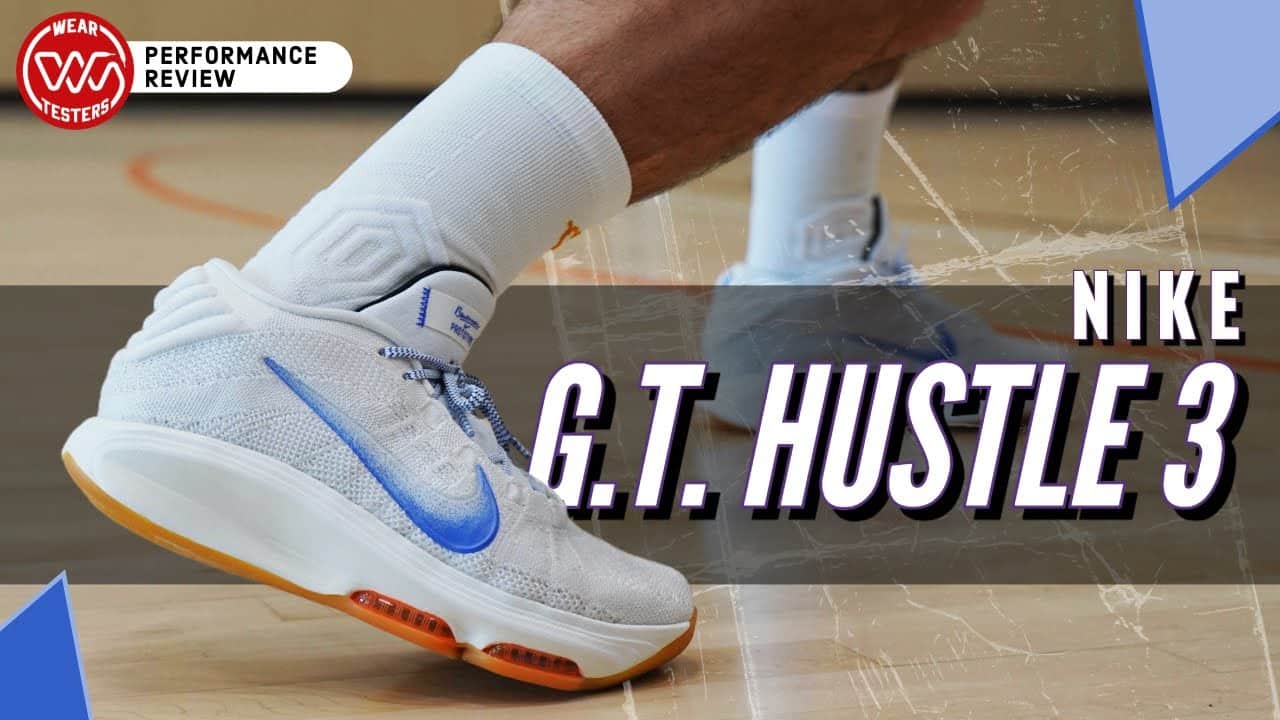
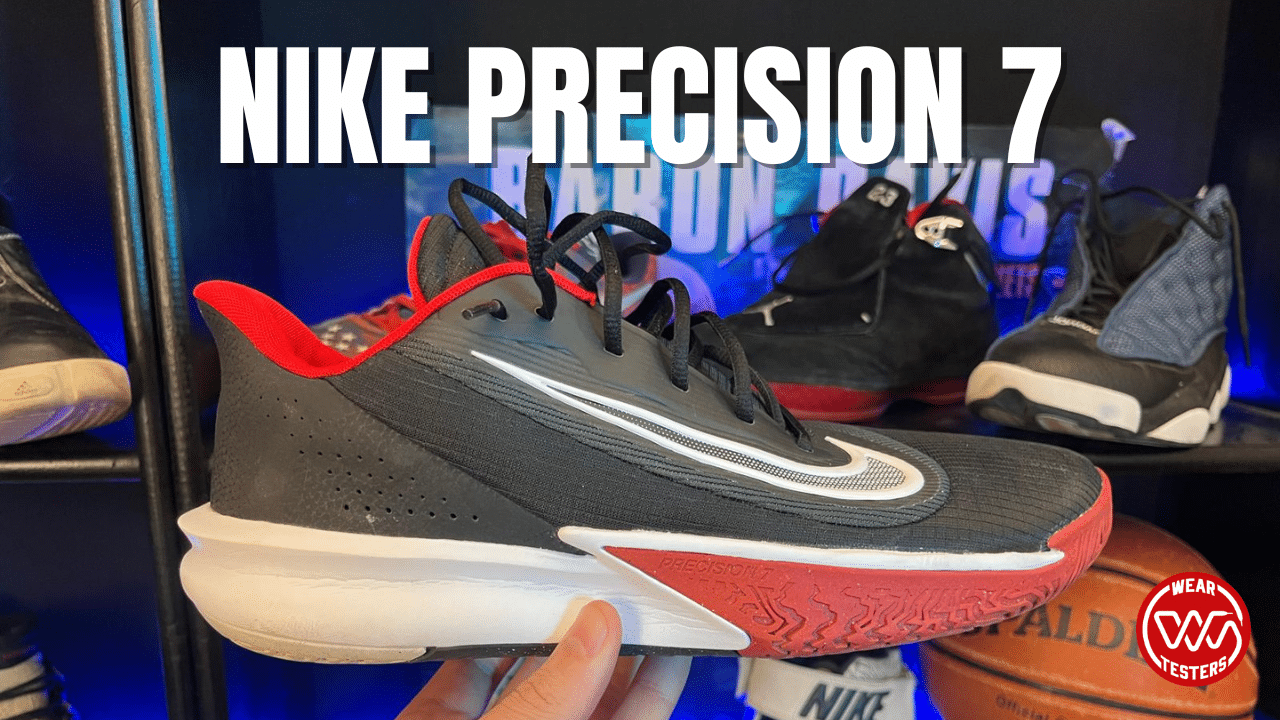
i loved my vaporfly , very fast shoe…but they have poor durability . I am nearly 90kg , a heal striker and run a 2 hr 55 marathon, so I do test any shoe quite harshly, but these lasted less than 200km for me.